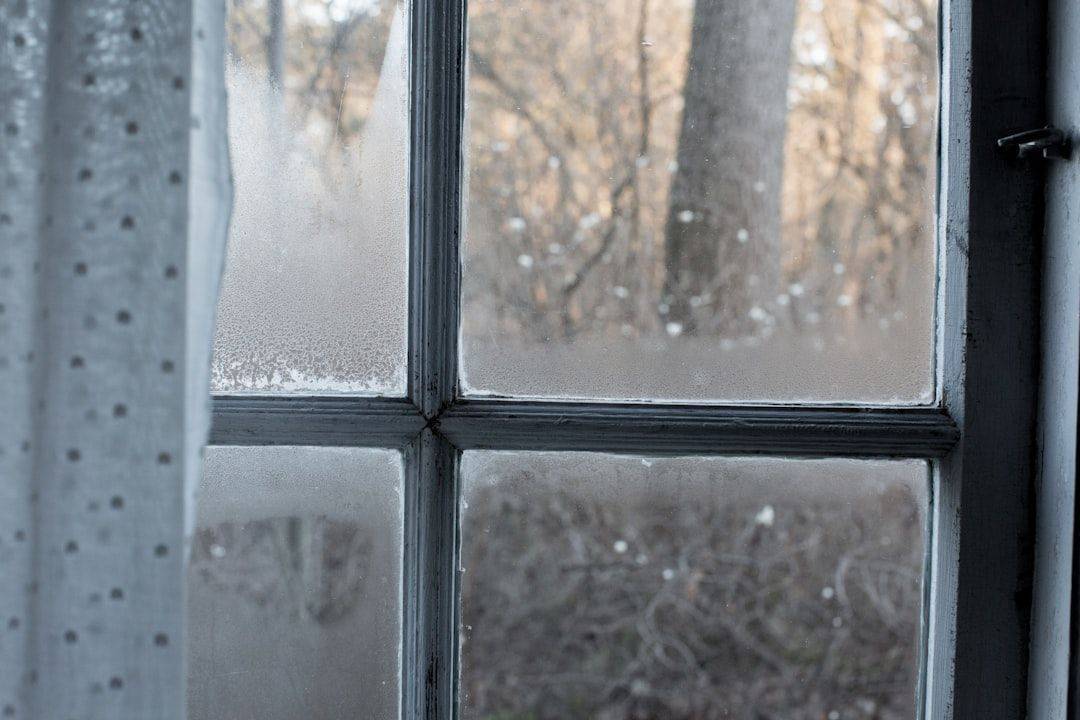IN BRIEF
|
Installing a window yourself is a task that can seem intimidating, but with a good practical guide, it becomes a doable project. Whether to replace old joinery or to improve the insulation of your home, knowing the essential steps and the right techniques is crucial. This guide will walk you through the installation process, covering the different types of installation, the materials to use, and the tools needed, while offering tips to avoid common mistakes. With this information, you will be able to make this change effectively and with confidence.
Replacing a window may seem like a daunting task, but with the right instructions and a little patience, it is entirely possible to install a window yourself. This practical guide invites you to discover the steps to succeed in your project, while evaluating the benefits and the disadvantages of this approach.
Benefits
Installing your windows yourself presents several benefits. First of all, it allows for substantial savings. In fact, you will not have to pay for professional labor, which can represent a significant part of the total cost of the work. In addition, by being in control of your project, you have the freedom to choose the design, material and finish that best integrates with your home. Ecological windows, for example, are increasingly popular and their installation helps reduce your carbon footprint. For more information on this, you can check out this practical guide.
Another positive point is the feeling of satisfaction and accomplishment that comes from carrying out such work yourself. Learning new DIY skills can also be rewarding and boost your confidence for future projects. Finally, installing a window yourself allows you to personalize your living space to your taste, taking into account criteria such as brightness or thermal insulation.
Disadvantages
Despite the numerous benefits, there are also disadvantages to take into account before embarking on the installation of a window. First of all, installing windows requires technical skills and know-how that not everyone has. Poor installation can lead to waterproofing or insulation problems, which can degrade the thermal comfort of your home.
Next, time is an important factor to consider. Installing a window can be a lengthy process that requires several hours or even days, especially if you are new to this area. In addition, it is essential to respect local regulations, particularly with regard to building permit applications or work declarations. Failure to follow these rules could result in penalties. For more information on window types and their installation, you can consult the resources available on the website window.guide.
Finally, in the event of a problem, you will have to manage the repairs or corrections yourself, while a professional would also be able to intervene in the event of poor workmanship. In summary, although installing a window yourself has its benefits, it is crucial to carefully weigh the pros and cons before embarking on this adventure.
Changing your windows is a project that can seem intimidating, but with a little preparation and the right instructions, it is entirely possible. carry out this task yourself. This guide will provide you with step-by-step steps to help you replace your old joinery efficiently, by choosing the right type of installation and using the appropriate tools.
Understand administrative requirements
Before starting your project, it is essential to check your legal obligations. Depending on your place of residence and the nature of the work, you will need to complete a work declaration or apply for a building permit. Remember to inquire at the town hall to avoid surprises.
Preparing to change windows
The first step before proceeding with theinstalling a new window is to prepare the site. This step includes collecting the necessary materials such as shims, suitable screws, sealant and possibly additional tools, such as a saw or level. Also be sure to protect the floor and surrounding surfaces.
Dismantle old windows
Before installing the new joinery, it is necessary to carry out the removal of old windows. Start by removing the trim and unscrewing the window frame. Don’t forget to remove the wings by opening the window and removing the sash. Once the frame is removed, check the condition of the opening to make sure it is ready to accommodate the new window.
Choose the type of installation
There are several methods for installing your windows. You will have the choice between tunnel installation, where the window is inserted into the thickness of the wall, and the rebated installation, where the old building is completely removed. The choice of the type of installation will depend on the condition of the wall and your aesthetic preferences.
Install the new window
To install the new window, start by positioning it in the opening. Use wedges to hold it securely and check using a level that it is level. Once in place, secure it with suitable screws. The next step is to apply sealant around the frame to prevent water infiltration.
Finishes and cleaning
After installing the window, it is time to carry out the finishing touches. Replace the trims if you kept them, or replace them if necessary. Also make sure to to clean the work area and clear any debris. After that, enjoy your new window and the comfort it brings to your home.
For more information on the types of windows available, be sure to check out the window resources. aluminum windows or on the choice of custom windows, as well as the preferred materials to ensure a successful and durable installation. Also remember to discover the PVC window maintenance tips to extend the life of your installations.
Installing a window yourself may seem like a daunting challenge, but with the right instructions and a little preparation, it’s a completely doable project for budding DIYers. This article offers you practical advice and essential tips to successfully replace your windows with confidence.
Preparation before installation
Before you begin installation, it is crucial to properly prepare your project. Start by measuring the space where you want to install the new window. These measurements must be precise, as they will determine the type and size of window to purchase. It may also be necessary to complete a work declaration or request a building permit, depending on the legislation in your region.
Choose window type
There are different window materials and styles on the market, such as PVC, aluminum or wood. Each material has its advantages and disadvantages. For example, if you opt for wooden windows, know that they have advantages in terms ofthermal insulation and aesthetic, while aluminum windows offer excellent lightness and durability. For more details, see these material comparisons.
Necessary equipment
To carry out the installation, it is important to gather all the necessary materials before you start. This includes shims, suitable screws, sealant as well as tools such as a spirit level, screwdriver and drill. Remember to protect yourself with gloves and safety glasses during the entire process.
Installation steps
The installation procedure begins with removing the old window. This step requires carefully removing the trim and existing frame. Once this is done, you can insert the new window depending on the installation method chosen, whether in tunnel or in rabbet. Make sure the window is level before final fixing.
Finishes and maintenance
After installing the window, be sure to carry out any necessary finishing touches, such as filling the joints with sealant. This guarantees better insulation and will prevent any moisture infiltration. To preserve your windows, carry out regular maintenance, in particular to check the condition of the seals and opening mechanisms.
Comparison of Window Installation Methods
| Installation Type | Features |
| Tunnel installation | Window inserted into the thickness of the wall, ideal for renovations. |
| Rebated installation | Old frame removed, offers better insulation and aesthetics. |
| Total Removal | Complete replacement of the frame, recommended for optimal insulation. |
| PVC materials | Durability, easy maintenance, and excellent value for money. |
| Materials Wood | Warm aesthetics, good thermal performance but maintenance required. |
| Materials Aluminum | Modern and robust, but less insulating without thermal break. |
| Necessary Tools | Spirit level, drill, adjustable wrenches, wedges, sealant. |
| Preparations | Verification of dimensions, prior declaration or building permit. |
| DIY Benefits | Savings on labor costs, personal satisfaction. |
Testimonials on the practical guide to installing a window yourself
Jean, an amateur DIYer, shares his experience after following the guide: “He really helped me understand the steps of the process. The instructions were clear and precise. I felt confident in installing my PVC window. The end result lived up to my expectations.”
Marie, a novice in the DIY field, testifies: “I was worried that replacing my old windows would be complicated, but thanks to this handy guide, I was able to do it alone. Every step was well explained and I managed to finish the job in one day!”
Luc, a renovation enthusiast, talks about the advantages: “Installing my windows myself was a rewarding experience. I didn’t think it would be so rewarding. The guide gave me the tips I needed to ensure perfect installation.”
Sophie, who opted for the renovation of her house, reveals: “I was nervous about changing my windows, but with the advice and recommendations of the guide, I managed to save money while improving the aesthetics and insulation of my home.”
Antoine, for his part, highlights the practical dimension: “The guide provides advice on what equipment to use, which saved me time and money. I was able to get everything I needed in one trip to the store.”
Émilie, who carried out her project over a weekend, concludes: “It was a real challenge, but I was able to follow the guide step by step. My partner and I are proud of our work! I would not hesitate to recommend this guide to others.”
Installing a window yourself can seem intimidating, but with the right materials and precise steps, it becomes an accessible project even for DIY novices. This guide will walk you through the process, from preparation to final installation, while providing you with practical advice to complete your project.
Step 1: Project preparation
Before you embark on the installation of your window, it is essential to prepare your project well. First, check if a declaration of works or a building permit is necessary depending on your situation. This will depend on your type of housing and the Urban Planning Code of your region. Next, carefully measure the space where the window is to be installed, taking into account the dimensions of the frame and the style of the chosen window.
Step 2: Choice of installation type
There are several types of installation for windows, depending on the configuration of your wall and the old frame. The two main methods include:
Tunnel installation
This technique involves inserting the window into the thickness of the wall. It is ideal for new constructions or when the wall is in good condition. This provides a neat and modern look.
Rebated installation
In this case, the old window frame is removed, making way for the new joinery. This method is often used whenrenovation windows and requires special attention during dismantling to avoid damaging the wall.
Step 3: Tools and Materials Needed
Before you begin installation, gather all the tools and materials you will need. These include:
- Wedges to align the window
- Suitable screws the type of window and your wall
- Sealant to ensure good insulation
- A spirit level to check horizontality and verticality
- A drill and a screwdriver
Step 4: Removing the Old Window
To replace a window, start with the removal of old joinery. Open the window and remove the sash. Next, dismantle the trim and frame. Use caution during this step to avoid damaging the wall or window opening.
Step 5: Installing the New Window
Once the old window is removed, it’s time to install the new one. Place the window in the opening and use shims to ensure proper positioning. Make sure it is level using the spirit level. Then secure the window with the screws and be sure to apply sealant to the joints to prevent infiltration.
Step 6: Finishes
After installing the window, replace the trim and check the seals one last time. Finally, clean the work area and check the window for proper operation. With patience and method, you have successfully completed a DIY project that improves your home!



